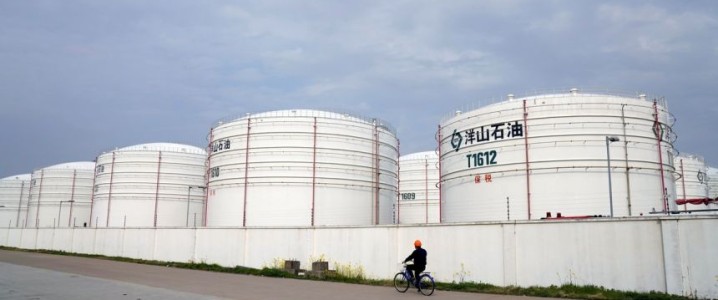In a strategic move to bolster its energy security amid global market volatility, China is accelerating the construction of 11 new oil storage facilities over the next two years. State-owned oil giants such as Sinopec and CNOOC are leading the effort, aiming to add a combined capacity of approximately 169 million barrels by the end of 2026.
This expansion, equivalent to about two weeks of the country’s crude oil imports, underscores Beijing’s ongoing drive to stockpile reserves while crude prices remain relatively low.
Sources indicate that around 37 million barrels of storage have already been completed at these sites, with the remainder slated for rapid development in 2025 and 2026.
The new facilities will be distributed across various regions, including three in central China—specifically in the northern province of Shaanxi—to enhance nationwide distribution and resilience.
This initiative comes as China continues to ramp up its strategic petroleum reserves, estimated by analysts to have added an average of 530,000 barrels per day in recent months.
By expanding storage infrastructure, Beijing aims to shield its economy from potential supply disruptions, price spikes, and geopolitical tensions in key oil-producing regions.
China’s Oil Imports: Sources and Volumes
As the world’s largest importer of crude oil, China plays a pivotal role in global energy markets. In 2024, the country imported an average of 11.1 million barrels per day (b/d), down slightly from 11.3 million b/d in 2023, reflecting adjustments in refinery throughput and economic factors.
These imports account for roughly 74% of China’s apparent oil consumption, highlighting the nation’s heavy reliance on foreign supplies.
energypolicy.columbia.edu
China’s top crude oil suppliers in 2024 included:
- Russia: Leading the pack with $94.8 billion in exports, representing 18.8% of China’s total crude imports.
- Malaysia: $51.6 billion, or 10.3% of imports.
- Saudi Arabia: $49.2 billion, accounting for 9.8%.
- Iraq: $38.2 billion, or 7.6%.
- Oman: $33.3 billion, representing 6.6%.
This diversification helps mitigate risks, though Russia has solidified its position as the primary source in recent years due to discounted prices and strengthened bilateral ties.
China’s Oil Demand and Usage
China’s oil consumption remains robust, driven by its massive industrial base, transportation sector, and growing petrochemical industry. In 2023, daily oil consumption reached approximately 16.6 million b/d, marking a significant increase from prior years.
However, apparent oil demand in 2024 moderated to around 15 million b/d, influenced by economic slowdowns and shifts toward cleaner energy sources.
Analysts project that China’s total oil demand, encompassing all petroleum products, will rise by about 100,000 b/d in 2025 before peaking in 2027.
Demand for petrochemical feedstocks continues to grow, up nearly 5% in 2024 with new plants coming online, while fuel oil demand—such as for gasoline, diesel, and jet fuel—has plateaued at around 8.1 million b/d, down 2.5% from 2021 levels amid electrification trends in transportation.
Globally, China accounts for about 13.2% of world oil consumption, solidifying its influence on international prices and supply dynamics.
This storage expansion aligns with China’s broader energy strategy, emphasizing self-reliance and preparedness. As global oil markets navigate uncertainties, including Middle East tensions and shifting trade patterns, Beijing’s proactive stockpiling could provide a buffer against future shocks. Energy News Beat will continue monitoring developments in China’s energy sector.
Do you have a Tax Burden in 2025?
Crude Oil, LNG, Jet Fuel price quote
ENB Top News
ENB
Energy Dashboard
ENB Podcast
ENB Substack

